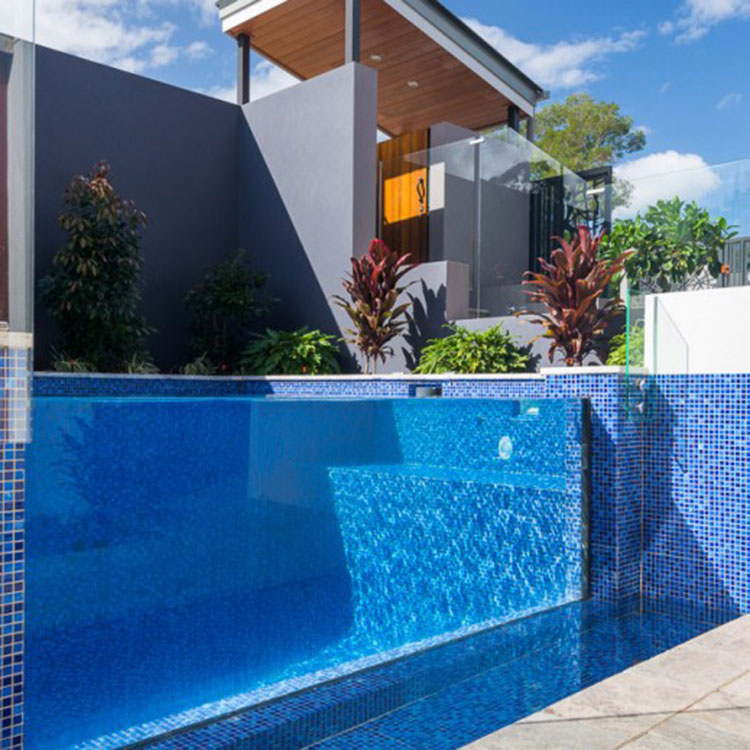Assessing the Durability of Family Courtyard Acrylic Swimming Pools Versus Traditional Pool Options
2024-05-17
Swimming pools have long been a beloved addition to homes, offering a space for relaxation, exercise, and social gatherings. Traditionally, pools have been made from materials like concrete, fiberglass, and vinyl. However, a new contender has entered the market: the Family Courtyard Acrylic Swimming Pool. This modern innovation boasts several benefits over traditional pool materials, particularly in terms of durability. Let’s explore how the acrylic swimming pool stacks up against its conventional counterparts.
The Strength of Acrylic
Acrylic, known for its clarity and strength, is a versatile material used in various applications, from aquariums to airplane windows. When it comes to swimming pools, acrylic offers several durability advantages:
1. Impact Resistance: Acrylic pools are highly resistant to impacts. Unlike concrete, which can crack under stress, or fiberglass, which can develop stress fractures, acrylic can absorb and distribute force without sustaining damage. This makes acrylic pools particularly suitable for environments where they might be subjected to physical impacts, such as homes with active children.
2. Weather Resilience: Acrylic’s resilience extends to extreme weather conditions. It can withstand significant temperature fluctuations without warping or cracking. Traditional pools, especially concrete ones, often suffer from freeze-thaw cycles that can lead to cracks and structural issues over time. Acrylic pools, on the other hand, maintain their integrity and appearance in both hot and cold climates.
3. Chemical Resistance: Maintaining a pool involves the use of various chemicals to keep the water clean and safe. Acrylic is highly resistant to the corrosive effects of these chemicals, reducing the likelihood of surface degradation. Concrete pools, conversely, can be more susceptible to chemical erosion, requiring frequent repairs and resurfacing.
4. UV Stability: Prolonged exposure to sunlight can degrade many materials. However, acrylic is UV-stabilized, meaning it won’t yellow or become brittle over time when exposed to the sun’s rays. This contrasts with some traditional materials, which can fade or deteriorate under constant UV exposure.
Comparing Traditional Pool Materials
To fully appreciate the durability of acrylic pools, it’s helpful to compare them to the traditional options:
1. Concrete Pools: While concrete pools are known for their strength and customization options, they are prone to cracking and require regular maintenance, including resurfacing and repairs. The porous nature of concrete also makes it more susceptible to algae growth, which can lead to further structural issues.
2. Fiberglass Pools: Fiberglass pools offer a smooth finish and faster installation times, but they can suffer from osmosis (water permeation), leading to bubbles and blisters in the surface. They are also less customizable in shape and size compared to concrete and acrylic pools.
3. Vinyl Pools: These pools are budget-friendly and offer a smooth, non-porous surface. However, the vinyl liners are prone to punctures and tears, necessitating frequent replacements. They are also less durable in harsh weather conditions and can be easily damaged by pool equipment and toys.
The Aesthetic Edge
Durability isn’t the only area where acrylic pools shine. Their aesthetic appeal is another significant advantage. Acrylic pools can feature stunning transparent walls, creating a visually striking effect that traditional pools cannot match. This can transform a family courtyard into a luxurious and modern oasis.
Maintenance and Longevity
When it comes to maintenance, acrylic pools require less frequent and intensive care compared to traditional pools. The non-porous surface resists algae and bacteria buildup, reducing the need for harsh cleaning chemicals and scrubbing. Additionally, the longevity of acrylic pools can surpass that of traditional pools, thanks to their resistance to common forms of damage.
Conclusion
The Family Courtyard Acrylic Swimming Pool represents a significant advancement in pool technology, offering superior durability compared to traditional concrete, fiberglass, and vinyl pools. Its resistance to impact, weather, chemicals, and UV radiation ensures a long-lasting and visually appealing addition to any home. While the initial investment might be higher, the reduced maintenance costs and extended lifespan make acrylic pools a wise choice for those seeking a durable and luxurious swimming experience.



